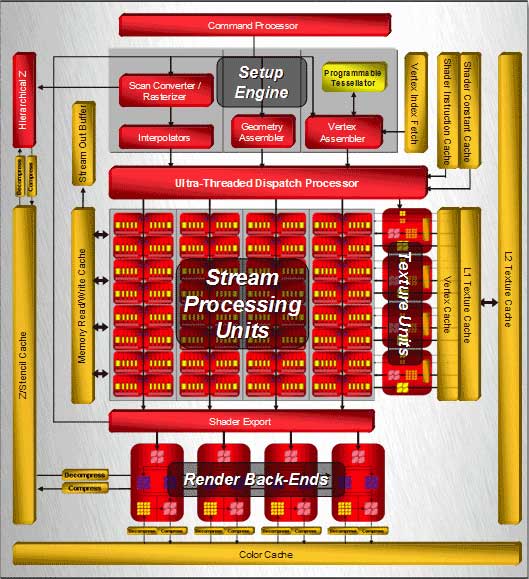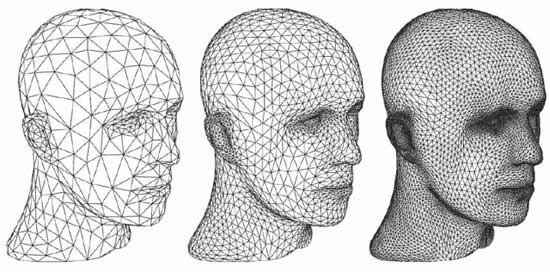ATI Radeon HD 2900 XT Video Card Review
X2000 Architecture Cont.
Whew! That spec sheet is impressive, but what does it mean to you and the games youre playing? It boils down to incredible theoretical performance in DirectX 10 but does not guarantee much for DirectX 9 which is all that we have to play today. Another noteworthy upgrade is native CrossFire implementation in the R600 GPU. This means no more dongle cable hanging about the back of your computer case, just two simple bridges connected just as easily as the SLI bridge for NVIDIA. We first saw this in use on the X1950 Pro and X1650XT. The native mode is far more user friendly and had fewer issues, quicker response, and provides an all around better experience. The compositing engine is now on board each and every GPU so that means no more master/slave cards. AMD also designed CrossFire to actually be able to use more than 2 GPUs. It also means that resolutions up to 2560×2048 are supported, even if you dont have a monitor that can display such an image!
Shaders, shaders, and more

Moving on to the shaders, we see above the layout of the GPU. Though the R600 claims an amazing 320 stream processors versus just 128 for the 8800 GTX, the NVIDIA stream processors are clocked a great deal faster and it all ends up turning out to be near the same thing. In some situations, we will see that ATI is faster with their massively parallel shader approach while NVIDIAs design that is more efficient is faster in others. What it all boils down to is how the developers code their games.
Also new this go around is the Custom Filter Anti-Aliasing mode, or CFAA. This new form of AA is programmable like shaders and can be upgraded via a driver update. At the heart of the system, it runs an edge detection filter to the image before it is displayed on the screen, applies samples to where it is needed most, then cuts out those nasty looking jaggys. According to ATI this can be used with HDR, provides a higher number of pixel samples where they are needed, and allows the image to be less blurry because AA isnt applied in a uniform pattern which is what causes an anti-aliased image to appear blurred. Finally, regarding traditional Multi-Sample AA, there is now a 24x mode in case 4x, 8x, or 16x just wasnt giving you the quality you were looking for.
Tessellation

Tessellation is a great feature that is not completely new but is something that could be the next big thing, and ATI has a leg up on the competition here. The 2900XT has a hardware Tessellation unit built into the GPU. Tessellation can turn a low polygon model into a higher polygon model. A higher polygon model will mean a higher detailed image on the screen, important for rendering things like heads, bodies, and even terrain detail. When you combine Tessellation with a 2D grayscale image which uses shades of grey to determine a height value, a developer would not need a massive, geometrically complex scene to get the effect of an extremely detailed 3D environment, or face. To sum it up, Tessellation is reason that Cinematic rendering in movies like Cars, and Happy Feet are incredibly detailed. With real-time hardware tessellation, we will soon see cinematic level of detail in our games, provided developers start to take advantage of this great feature.

Comments are closed.